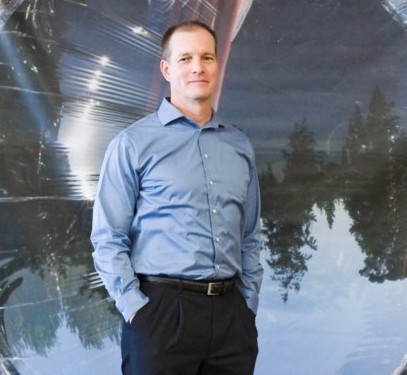
Rob Lamkin, CEO at Cool Earth Solar, has more than 20 years of experience in the energy industry. His career includes numerous leadership positions, including those at Calpine Corporation, Mirant Corporation and the Northern California Power Agency. As CEO of Cool Earth Solar, Rob is focused on quickly and economically scaling the company’s CPV technology to address the global energy crisis. Lamkin, a member of SEIA and ACORE’s Leadership Council, shares his thoughts on the trends in renewable energy.
By Jeanny Lim
Could you please update us on the global trends in renewable energy investment? What are the future prospects for investment?
We see that cost is the primary driver in the large-scale adoption of renewable generation. The cost per kilowatt hour continues to be more expensive than energy from traditional fossil fuel power plants. This problem can be addressed in three ways. First, higher prices can be temporarily supported by government incentives such as feed-in tariffs that pay a minimum amount (often a premium) for clean energy. Second, the price of competing traditional fuels can be raised when government force externalities to be counted into the costs of generation. Examples of this include carbon tax and cap and trade. Third, attacking individual component costs can lower the overall system cost. Costs can be measured as either Levelized Cost of Energy which is the per kwh cost over the life of a renewable generation asset, or by the Installed Cost per Watt which indicates the up front costs of equipment and labor at the beginning of the assets life.
Investment areas arise when one or more of these three conditions addressing cost are implemented. Geographically, renewable energy markets expand when government support affects price or subsidizes cost. In terms of technologies, there are opportunities to reduce cost through both process and equipment costs. Process costs improvements may be easier to implement but equipment cost improvements through innovative design will create longer-term sustainable advantages.
An example of process cost improvement is the trend towards deploying greater amounts of solar modules per project. This is true at a residential level where installers attempt to aggregate and cluster installations of at least 75 neighbors and at the commercial and utility scale where project capacities are trending to the maximum that existing transmission infrastructure can support without significant upgrade costs.
How much investment has been made into the renewable energy industry in your country/region? And what are the future prospects?
Venture stage investments have been down over the last year due both to the weak economy and to the realization by VCs that any form of power generation engineering takes much longer than in areas such as software/Internet development. However, we think that the successful IPO of battery maker A123 increases the expectation of profitable exits by U.S. clean tech firms for investors. We anticipate this will lure more investment into U.S. clean tech.
How has the global economic crisis been affecting the renewable energy industry? Is there a specific technology sector that has been affected more severely? And is there a specific geographical region that has been affected more severely?
There is an interesting finance dynamic in play. In the short term, lenders are more cautious about taking on risk. We’re heard that in Europe only flat panel solar projects are getting funding because those panels have a 30-year track record. However, new technology designs, not old technology designs, will push down equipment costs until the LCOE and Installed Cost per Watt metrics are competitive with fossil fuel generation. We think that in the long term, the smart and patient investment money will fund the technology that is revolutionary at cost improvement rather than merely incremental.
Jeanny Lim is Editor-in-Chief of InterPV. Send your comments to swied@infothe.com.
For more information, please send your e-mails to pved@infothe.com.
© www.interpv.net All rights reserved
|



